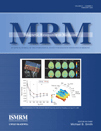Whole-brain single-shot STEAM DTI at 4 Tesla utilizing transverse coherences for enhanced SNR
Abstract
Diffusion tensor imaging is an important method for noninvasively acquiring structural information of the human brain. For advanced fiber tracking, the acquisition of diffusion-weighted (DW) images has to be performed along many different spatial directions, resulting in long scan times. Therefore, the ultra-fast imaging method, echo-planar imaging (EPI), is mostly used, but this technique suffers from susceptibility-induced image artefacts and geometric distortions. These problems become even more pronounced at very high magnetic field strengths. In this regard, DW, single-shot STEAM is an interesting and rapid imaging alternative to EPI-based methods. DW single-shot STEAM enables the acquisition of artefact-free images albeit at the expense of a reduced signal-to-noise ratio (SNR), which can be compensated by utilizing high magnetic fields. Here, the application of DW single-shot STEAM at 4 Tesla is demonstrated. To optimize the SNR and the resolution properties, a new variable flip-angle computational algorithm is introduced enabling accurate signal evolution computation with a precise calculation of transverse coherences. Omission of radiofrequency (RF) spoiling results in an approximate twofold increase of the DW signal by integration of the stable refocused transverse magnetization. The advantage of the approach is shown in simulations and in vivo experiments. Magn Reson Med 61:372–380, 2009. © 2009 Wiley-Liss, Inc.




